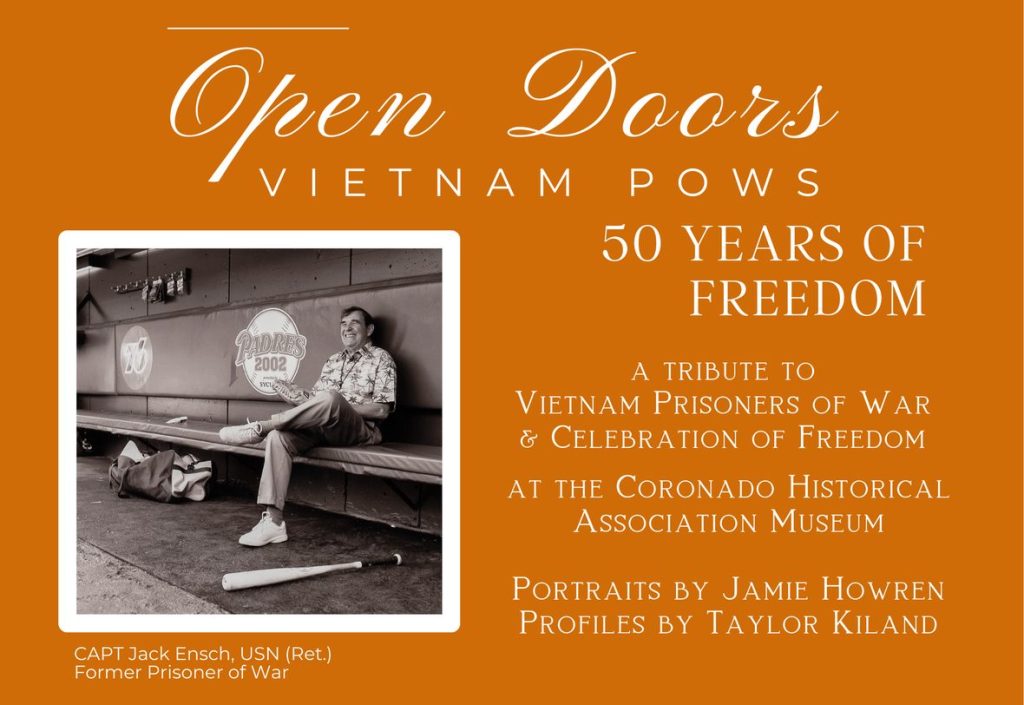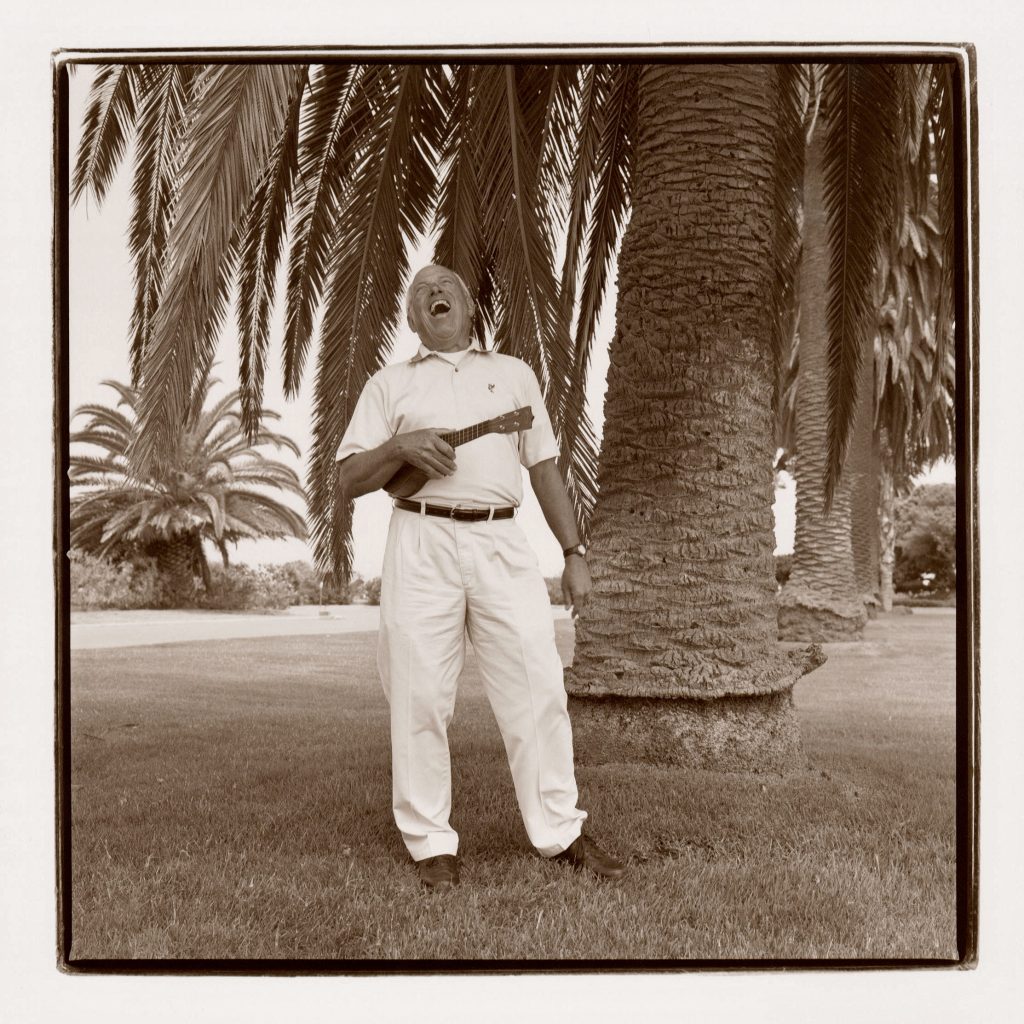
On February 12, 1973, 591 American Prisoners of War (POWs) were airlifted home from Vietnam as part of Operation HOMECOMING. Many men had been imprisoned for eight years, the longest-held POWs in United States’ history. A handful called Coronado home, including Bill Stark, Harry Jenkins, Ed Martin, Mel Moore, and Jim Stockdale.
Fifty years later, photographer Jamie Howren and author Taylor Baldwin Kiland have curated an exhibit that sheds light on thirty POWs’ will to live, spirits, and individual experiences, with great intentionality and patience. “Open Doors: Vietnam POWs Fifty Years of Freedom” has been a twenty-year project curated by Howren and Kiland. It will be on display at the Coronado Historical Association through September 15, 2023 (National POW/MIA Recognition Day).
A testament to these first liberated POWs, “Open Doors” acts as both a tribute to the prison conditions endured and a window—or open door—into the accomplishments of the POWs following their release. With the exhibit, Howren and Kiland seek to show a “glimpse of what happened after the flashbulbs [of the POWs release] fade[d]” and in this way, their exhibit is a triumph. Its photos and accompanying memoirs capture subjects’ personalities and lived experiences through the provision of direct quotes and visual aids such as empty cigarette boxes, shoes made of tires, medals, and artwork created by one of the POWs, Capt. Mike McGrath.

“Open Doors” has made its way into over 15 venues, and the CHA exhibit feels even more special with its local connections to the island. The first room offers an introduction to the exhibit and its intentions. Museum-goers are greeted with an exuberant photo of a group of newly-freed prisoners celebrating as they lift off from Hà Nội in North Vietnam; in stark contrast, we then see a pair of Capt. Tony Marshall’s one-size-fits-all POW pajamas on display. Other artifacts bring the reality of the prison conditions to light: including the flight log of U.S. Navy pilot James Stockdale, one of the razor blades POWs were required to use—and share—weekly, and Hải Dương soap bars which were given to the POWs only after the Vietnam War ended.
The entrance into the second room prepares viewers for what to expect, reading: “‘The photographs and profiles in this exhibit, in a way, dissolved the walls and years that once separated these men during their captivity from each other, from their families, and from their country. Today, we pause to take a closer look at the personal and professional triumphs of these survivors we welcomed home fifty years ago.’” From here into the third and final room of the exhibit, viewers are greeted with portraits and mini-memoirs of POWs such as Lieutenant Colonel Tony Marshall, Capt. Richard D. “Moon” Mullen, and Capt. John McCain. Those curious could spend an entire afternoon, or longer, reading the details of each profile and looking at the black-and-white portrait “windows” which capture each individuals’ personality and shed light on their lives following the war. Impressively, many of these POWs went on the become presidential and vice presidential candidates, U.S. senators and representatives, governors, chief executive officers, business owners, psychologists, doctors, and lawyers, making them one of the “most successful” groups post-Vietnam.

Much like their homecoming was celebrated fifty years ago, it is beautiful that the celebration of these POWs’ legacies continues thanks to Kiland and Howren’s “Open Doors.” Museum-goers are offered an honest glimpse into history, and how this remarkable point in history began to heal and transform the lives of fathers, grandfathers, sons, and their families.
For more information about Coronado Historical Association’s exhibit, click here.
1100 Orange Ave, Coronado
Museum Galleries & Store Open
Tuesday – Friday 10 am to 4 pm
Saturday & Sunday 10 am to 3 pm





